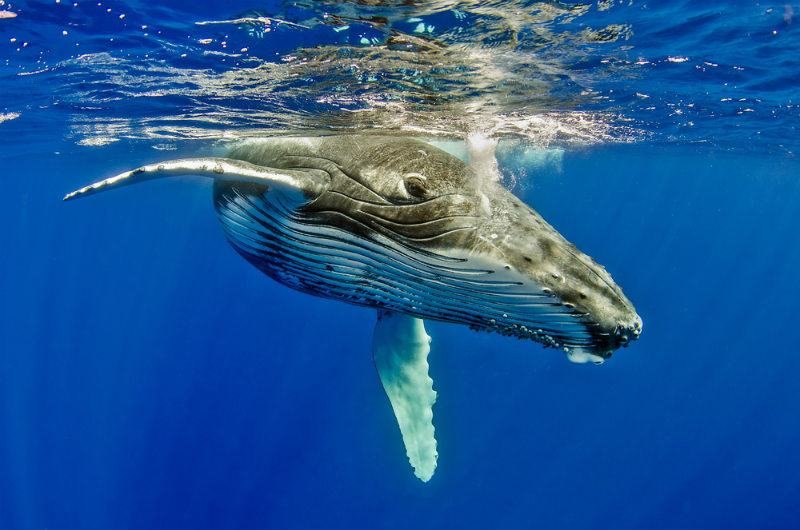FACTS YOU SHOULD KNOW ABOUT
HUMPBACK WHALES
Humpback whales are a type of a baleen whale and are widely known for their unique behaviour. They are famous for leaping out of the water, rolling in the air with their huge pectoral fins outstretched, and crashing noisily back in the water. They are also known for “singing,” particularly the male humpback whales. These songs are extraordinarily long and complex and can travel very far throughout the oceans. According to experts, these gentle giants sing perhaps to communicate with other whales and to attract a mate.
FACTS ABOUT HUMPBACKS
Humpbacks can grow between 14 and 18 metres long and weigh up to 50 tonnes. Calves, or baby humpbacks, can be four to five metres long and weigh two tonnes at birth. Humpback whales have a small dorsal fin located about two-thirds of the way down their back. Their name comes from the way they arch their back when they dive.
Humpback whales are also notable for their large pectoral fins, which make up about a third of their body length. They also have unique black and white markings on the underside of their tail flukes. Surprisingly, these markings are unique to each humpback whale, and no two are exactly alike.
Because they are baleen whales, humpbacks feast on krill, plankton, and very small fish. In fact, they have developed a unique method of gathering prey. They create and release bubble rings to attract schools of fish, and when they capture their prey’s attention, the humpbacks surface in the centre of the ring with their mouth open.
Like many whales, humpback whales make very long journeys every year to visit their feeding and breeding sites. They usually travel for up to eight kilometres per hour, but when migrating, they travel for only 1.6km/h, taking the time to rest and socialise with each other along the way.


HUMPBACK WHALE POPULATION
After suffering a decline due to massive whaling in the 1950s and 1960s, the humpback whale population is back stronger than ever. According to the University of Queensland’s Cetacean Ecology and Acoustics Laboratory, the current population of humpback whales is the highest ever recorded.
Dr Michael Noad, a member of the research team, said 24,500 whales were recorded during their 2015 migration. What’s amazing is that the whales’ population continues to increase every year.
WATCH HUMPBACK WHALES IN JERVIS BAY
Seeing humpback whales in the wild is nothing short of amazing. It is truly a magical experience. This is why many of those who have seen these majestic creatures in the wild want to relive the experience over and over again. Coastal NSW national parks are among the best places to see humpback whales in the wild during their migratory expeditions. If you want to see these majestic creatures up close, Jervis Bay Wild provides whale watching tours in Jervis Bay. Book a tour between June and October to enjoy this one of a kind experience.


